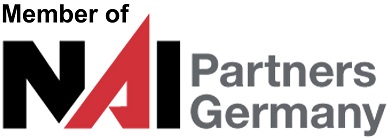Residential portfolio market in Germany: Annual transaction volume falls to lowest level since 2015 with €13.2bn in 2022
- Wait-and-see attitude among market participants and a decline in mega deals cause drop in transaction volume
- Below average sales in fourth quarter of €2.9bn
- Project developments maintain high market share and account for 42.6 % of transactions
- “Open-Ended Funds / Special Funds” remain most active buyers
- German investors continue to dominate the market despite a noticeable decline
- Forecasting for 2023 remains difficult, especially because the gap between seller expectations and buyer budgets is still too wide; ESG compliance is of mounting importance; new buildings remain in demand, but are associated with high building and financing costs, whereby attention is shifting to properties with development potential
Frankfurt am Main, 9th January 2023 – Residential portfolio transactions in Germany were lower than average in the fourth quarter of 2022, according to the latest study by NAI apollo. Total transactions in the past three months amounted to around €2.9 billion, which represents a slight decline of about €140 million compared to the previous quarter. This also represents by far the lowest Q4 volume recorded for the last five years (average value: €9.9 billion). The annual volume stood at around €13.2 billion. A lower result than this has not been registered since 2014, when transactions amounted to €13.1 billion. The 2022 figure also fell far short of the record result for 2021 (€50.9 billion, which would have been €17 billion without mega deals above €500 million) and the five-year average (€25.1 billion) owing to the lower number of deals above €500 million. In this segment, only the majority takeover of S IMMO AG by the CPI Property Group can be mentioned. Here, this report only takes into account the German residential units as a proportion of the overall portfolio after the end of the acceptance period for S IMMO shareholders in November.
“Buyers and sellers are still in the price negotiation phase and will act far more cautiously in the coming months than in previous years due to the rising financing costs resulting from the Ukraine war and the impending recession. At the same time, the imbalance between the supply of housing and demand is increasing as immigration picks up again and the number of new construction projects declines. This will have a motivating effect on market activity in the medium to long term,” said Dr Marcel Crommen, Managing Director of NAI apollo. Significant rent increases, especially in the metropolitan areas, are currently being observed, which has a stabilising effect on falling purchase price factors. In addition, a faster economic recovery is to be expected. “Although Germany is headed for a recession, latest forecasts indicate it will not be as severe as was assumed just a few months ago. In addition, interest rates should stabilise in the medium term, improving the earnings prospects for many investors in the long term. Outside of the growth regions, however, we expect investment activity to remain somewhat subdued,” added Stefan Mergen, Managing Partner of NAI apollo valuation & research GmbH.
First price corrections become evident
Around 63,800 units changed hands in 2022, the lowest number since 2010. “The fact that market activity has weakened to such an extent is primarily owing to the wait-and-see attitude of investors as a result of the gap in price expectations between sellers and buyers, both for property stock purchases and the sale of new buildings and forward deals. In particular, the “Listed Property Companies / REITs” that have dominated the market in previous years are being more prudent about purchases but are offering large portfolios for sale. A fall in prices is now becoming a reality, especially for properties with significant renovation and energy requirements,” said Dr Konrad Kanzler, Head of Research at NAI apollo. While the price per apartment was €236,000 in the first quarter of the year, it will average around €206,000 in 2022. However, this is still 18 % higher than the average price of the previous year, which was primarily influenced by the Deutsche Wohnen takeover by Vonovia and other major transactions. “The large proportion of project development sales, for which higher prices are achieved both in general and in view of ESG compliance, helped keep prices at a high level,” added Mergen.
“€100m < €500m” price segment dictates market developments
“The low number of transactions above €500m on the property investment market was particularly noticeable in the past year. In the previous year, this segment accounted for a record volume of €33.9 billion and a share of 66.7 %,” said Kanzler. In 2022, the largest share of 36.2 %, or around €4.8 billion (2021: €6.9 billion), was attributable to the “€100m < €500m” category. In the medium-sized segment (“€50m < €100m”), sales totalled around €3.2 billion (2021: €4.2 billion). The remaining sum of about €4.5 billion (2021: €5.9 billion) relates to investments below €50 million. “All size classes have thus recorded declines in sales compared to the previous year. Following the trend of recent years, the major German metropolitan areas and influx regions have again been the focus of investment activities in 2022,” said Mergen.
Trade in project developments at a high level, but on a downward trend
“Project Developers / Contractors” remained the most active group of sellers with a market share of 45.0 %. Residential construction projects that were sold before completion accounted for 33.7 % of sales in the final quarter, and 42.6 % or around €5.6 billion in 2022 as a whole. Yet while the market share of forward deals increased significantly compared to the previous year, the absolute volume clearly declined (2021: €7.1 billion). Above all, this reflects the shortage of tradable project developments. Strong investment interest has quickly reduced the supply here in recent years and caused prices to skyrocket. “Over the course of 2022, both general construction activities and the trade in project developments decreased, mainly owing to the rise in prices as a result of interest rate hikes, inflation and increases in construction and energy costs. The transaction volume generated by forward deals fell from €2.2 billion in the first quarter to just under €1 billion in the final quarter of 2022,” said Kanzler. Existing properties that are both modern and energy-efficient will benefit from this development. On the buyer side, the “Open-Ended Funds / Special Funds” accounted for the largest market share in 2022 as a whole with 37.6 % or around €5 billion (2021: €8.3 billion). They are followed by “Asset Managers / Funds Managers” with 14.0 % (2022: €1.8 billion/2021: €2 billion) and “Property Companies” with 12.8 % (2022: €1.7 billion/2021: €7.3 billion).
German investors dominate the transaction market, but lose market share
An analysis of the origin of buyers reveals that as in previous years, German investors dominated the residential portfolio market in 2022. However, the volume of purchases made by domestic players has fallen significantly from €40.9 billion in the previous year to €8.6 billion. “This sharp decline is primarily owing to the dominant role played by local investors in the mega deals that took place in 2021. However, the recent result is below average even in a long-term comparison. An even lower purchase volume by German investors was last reported in 2012. In the past twelve months, foreign investors were responsible for purchases totalling around €4.6 billion, which was significantly lower by around 54 % year-on-year. However, it is higher than in the years before 2020,” said Kanzler.
Purchasing activities expected to intensify in the second half of 2023
It is difficult to make predictions about the development of the German residential portfolio transaction market in 2023. “Continuing strong demand for new construction developments is to be expected. However, high construction and financing costs are slowing down both the realisation of such projects as well as transaction activities. Therefore, investors are increasingly seeking existing, energy-efficient buildings as well as properties that are associated with higher risks but offer potential for value increases, especially within the growth regions. For 2023, we anticipate a further correction in purchase prices to below the record levels of previous years. However, we do not expect a sharp drop in prices across all markets due to the ongoing shortage of supply,” said Crommen. According to the forecast by NAI apollo, the socially driven increase in the importance of sustainability aspects in residential construction will also have an impact on price development. In this context, ESG renovation potential is playing an increasingly important role in property valuations, and is especially significant for large portfolio owners. “User demand is high, rents are rising. And political objectives for new residential construction are far from being achieved, which supports the transaction market. Especially in times of crisis, the residential segment represents a safe and inflation-protected investment target. A recovery in the residential asset class can therefore be expected in the course of the year, provided no new exogenous shocks occur,” said Mergen. In addition, liquidity is available especially in the “Open-Ended Funds / Special Funds” group, and the gap between seller and buyer price expectations is narrowing. These are central framework conditions that are expected to increase the pace of market activity in the second half of 2023.

